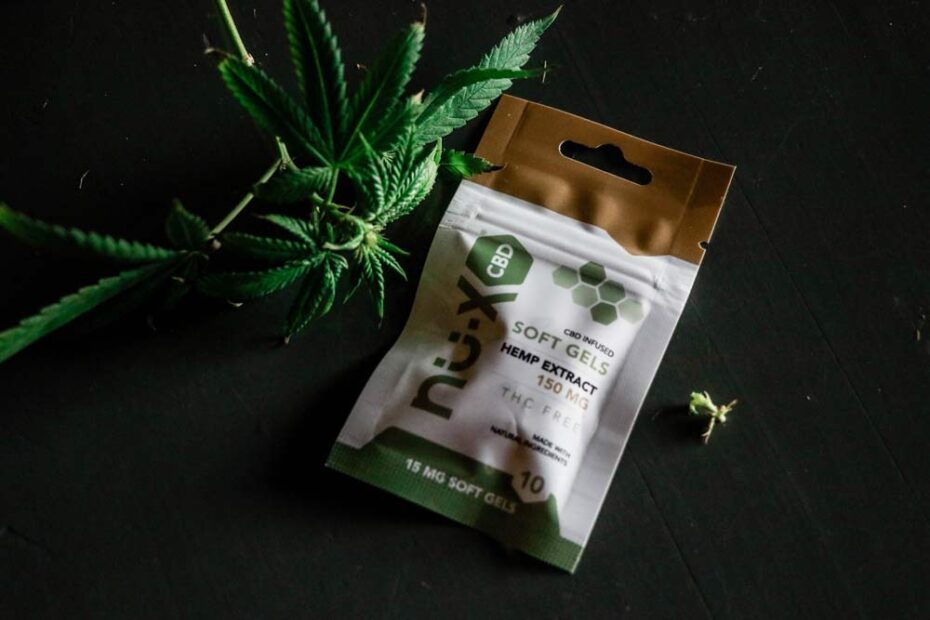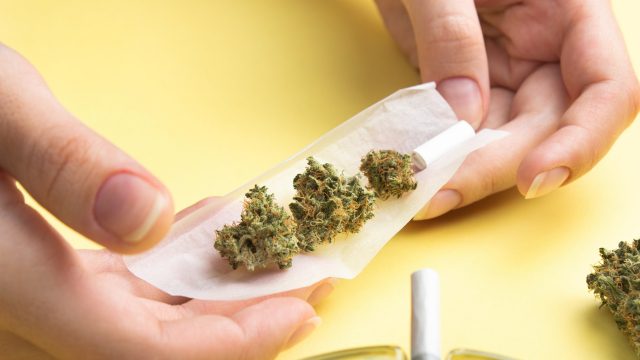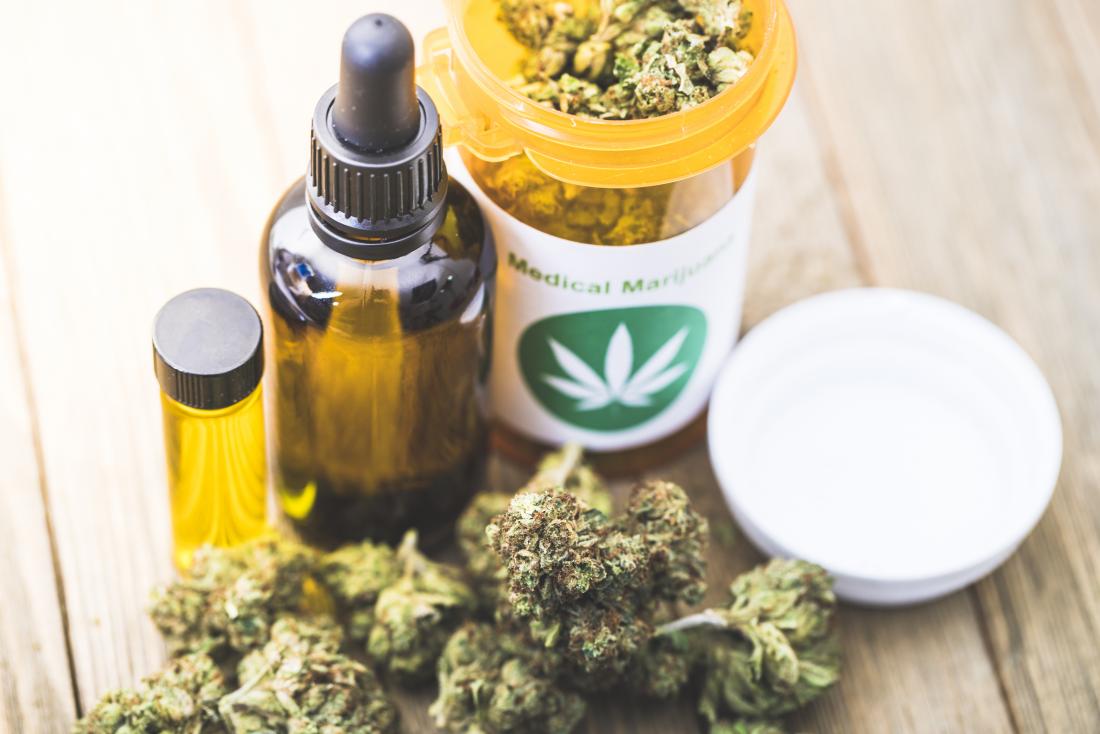Medical cannabis is a complex legal issue with different regulations across the world. In the united states, medical cannabis laws differ from state to state, ranging from complete prohibition to decriminalization and legalization.
Medical cannabis has taken center stage globally on both political and legal platforms. Despite rejecting cannabis for decades, several state governments introduce bills to legalize cannabis use in the medicinal and recreational categories. Medical cannabis is derived from the plant called cannabis sativa, often referred to as marijuana or weed.
However, the extent to which it’s permitted in a given country depends on its legislature and regulatory framework. Countries like the united states, canada, and a few european union countries like germany, italy, spain, and greece allow regulated use, sale, and production of medical cannabis under specific conditions and limitations. This article explores the legal landscape of medical cannabis, highlighting the different regulations around the world.

Credit: www.amazon.com
The Current State Of Medical Cannabis Laws In The Us
The Legal Landscape Of Medical Cannabis: The Current State Of Medical Cannabis Laws In The Us
Despite being prohibited by federal law, cannabis has become a topic of national discussion in recent years due to its medicinal properties. This has led to many states legalizing medical cannabis, with laws and regulations varying across the country. In this post, we’ll explore the brief history of medical cannabis legalization, give an overview of current federal laws and regulations, and provide a state-by-state breakdown of medical cannabis laws and regulations.
Brief History Of Medical Cannabis Legalization
Medical cannabis has been used for thousands of years for its medicinal properties, but it wasn’t until the 20th century that it became a topic of controversy. In the 1930s, cannabis was criminalized by the federal government with the marihuana tax act, effectively banning its use across the country.
It wasn’t until 1996 when california became the first state to legalize medical cannabis. Since then, many states have followed suit, with a total of 36 states now allowing for some form of medical cannabis use.
Overview Of Current Federal Laws And Regulations
Despite the growing acceptance of medical cannabis across the country, it remains illegal under federal law. The controlled substances act classifies cannabis as a schedule i drug, which means it has no accepted medical use and is highly addictive. This classification makes it difficult for researchers to conduct studies on its medicinal properties, and also means that medical cannabis users are at risk for federal prosecution.
The federal government also places restrictions on banking, taxation, and transportation of medical cannabis, which makes it challenging for businesses operating in the industry. This has resulted in many states creating their own regulations and laws for medical cannabis use.
State-By-State Breakdown Of Medical Cannabis Laws And Regulations
As mentioned previously, 36 states and the district of columbia have enacted laws allowing for some form of medical cannabis use. However, the specific laws and regulations governing medical cannabis vary from state to state.
Some states only allow for the use of low-thc cannabis products for certain medical conditions, while others have a more expansive program allowing for the use of medical cannabis for a wide range of conditions. Some states also have restrictions on the purchase and possession limits of medical cannabis, as well as on the forms in which it can be consumed.
It’s important to note that even within states where medical cannabis is legal, certain municipalities may have their own ordinances and regulations governing its use. Therefore, it’s crucial for medical cannabis users to stay informed about the laws and regulations governing their specific location.
The legal landscape of medical cannabis in the us is complex and constantly evolving. Despite its criminalization under federal law, more and more states are recognizing its medicinal properties and enacting laws allowing for its use. As researchers continue to study the benefits of medical cannabis, we can expect to see more changes to the legal landscape in the future.
What Medical Conditions Qualify For Medical Cannabis Use?
The Legal Landscape Of Medical Cannabis
As medical cannabis continues to gain acceptance and support, more states in the us and other countries are legalizing its use. However, qualifying medical conditions vary among jurisdictions. In this section, we’ll explore what medical conditions qualify for medical cannabis use, examine the evidence behind medical cannabis treatment efficacy, and provide guidance on how to get a recommendation for medical cannabis use.
List Of Qualifying Medical Conditions
Here are some of the most common medical conditions that may qualify patients for medical cannabis use:
- Cancer-related symptoms, such as nausea and vomiting caused by chemotherapy
- Chronic pain caused by multiple sclerosis, neuropathic conditions, or spinal cord injury
- Glaucoma, which can cause optic nerve damage and vision loss
- Post-traumatic stress disorder (ptsd) and anxiety disorders
- Hiv/aids, which can cause wasting syndrome, nausea, and neuropathic pain
- Inflammatory bowel diseases, such as crohn’s disease and ulcerative colitis
- Epilepsy and other seizure disorders
It’s important to note that qualifying conditions depend on the laws and regulations of each state. Patients should consult their healthcare providers and state laws to determine whether they can qualify for medical cannabis use.
Examining The Evidence Behind Medical Cannabis Treatment Efficacy
Medical cannabis has been shown to have potential therapeutic benefits for various medical conditions. However, the evidence behind its efficacy is not yet conclusive. Some studies have shown that medical cannabis can help reduce pain, nausea, and inflammation, while others have produced conflicting results.
The national academies of sciences, engineering, and medicine (nasem) published a comprehensive report in 2017 that reviewed the evidence on medical cannabis and its potential therapeutic effects. According to their findings, medical cannabis can help relieve chronic pain in adults and reduce chemotherapy-induced nausea and vomiting.
The report also suggested that medical cannabis might be effective in treating spasticity and multiple sclerosis-related symptoms, but more research is needed to confirm these findings.
How To Get A Recommendation For Medical Cannabis
Getting a recommendation for medical cannabis usually involves several steps. Here’s a brief overview:
- Find a healthcare provider who can evaluate your medical condition and determine whether you qualify for medical cannabis use.
- Register with your state’s medical cannabis program, if required.
- Obtain a medical cannabis recommendation or certificate, which will allow you to purchase medical cannabis products from a licensed dispensary.
- Consult with your healthcare provider and dispensary staff to determine the right dosage and delivery method for your medical condition.
In some states, telemedicine is available for medical cannabis evaluations, which allows patients to consult with healthcare providers remotely. Patients should research their state’s laws and regulations to determine the best approach for obtaining a medical cannabis recommendation.
Medical cannabis has the potential to provide therapeutic benefits for many medical conditions. However, the legal landscape of medical cannabis varies among different jurisdictions, and patients should consult their healthcare providers and state laws to determine whether they can qualify for medical cannabis use.
While the evidence behind medical cannabis efficacy is not yet conclusive, it’s an area of active research, and new findings may emerge over time.
Medical Cannabis Access And Availability
The legal landscape of medical cannabis is rapidly evolving, and laws can vary significantly depending on your state or country of residence. In this section, we will explore the different ways patients can access medical cannabis, the differences between medical and recreational cannabis, and the regulations and restrictions that govern medical cannabis dispensaries.
Legal Ways To Obtain Medical Cannabis
Patients seeking access to medical cannabis can obtain it in several ways, depending on their jurisdiction. Below are the most common legal ways individuals can obtain medical cannabis:
- Dispensaries: Patients qualified to use medical cannabis can purchase it from licensed dispensaries that have been approved by their state or country’s regulatory agency. These dispensaries can offer a range of cannabis products, including flowers, concentrates, edibles, tinctures, and topicals.
- Home cultivation: Some states and countries allow patients to grow their own cannabis plants at home, with certain restrictions, such as a limited number of plants or a specific location. This can reduce the cost of obtaining medical cannabis and provide patients with control over the quality of their medication.
- Caregivers: A caregiver is a designated person who can obtain medical cannabis on a patient’s behalf and deliver it to them. This is often necessary for patients who are physically unable to visit a dispensary or are located far away from one.
Differences Between Medical And Recreational Cannabis
The major difference between medical and recreational cannabis is the purpose for which they are used. Medical cannabis is used to alleviate a specific medical condition, while recreational cannabis is used for its psychoactive effects.
Some other key differences between medical and recreational cannabis include:
- Cannabinoid content: Medical cannabis is often high in cbd, which provides medicinal benefits without the psychoactive effects of thc, while recreational cannabis is often high in thc.
- Dosage: Medical cannabis is typically prescribed by a licensed physician, and the dosage is carefully measured based on the patient’s condition and needs. Recreational cannabis is typically used recreationally, and dosage is up to personal preference and tolerance.
- Cost: Medical cannabis is often more expensive than recreational cannabis due to the regulatory requirements placed on licensed dispensaries and cultivators.
Dispensary Regulations And Restrictions
Medical cannabis dispensaries are subject to numerous regulations and restrictions designed to promote patient safety and prevent diversion to illegal markets. Here are some common regulations and restrictions placed on medical cannabis dispensaries:
- Location: Dispensaries must comply with zoning requirements and distance restrictions from schools, parks, and other sensitive locations.
- Licensing: Dispensaries must apply for a license, which is granted by the state or country’s regulatory agency and subject to regular inspection and oversight.
- Product testing: Dispensaries must test their products for purity, potency, and safety, which is often done by third-party labs.
- Security: Dispensaries must have adequate security measures in place, such as surveillance cameras and alarms, to prevent theft and ensure patient safety.
Overall, access to medical cannabis has greatly improved in recent years, but it is important to understand the legal requirements and restrictions in your jurisdiction to ensure safe and legal access to this treatment option.
Understanding Medical Cannabis Labeling And Dosage
The Legal Landscape Of Medical Cannabis
Medical cannabis is a treatment option for many illnesses, and with increasing legalization, it’s important to understand the legal aspects of its use. One of the critical elements of using medical cannabis is understanding the labeling and dosage requirements. Here’s what you need to know:
Labeling Requirements For Medical Cannabis Products
When purchasing medical cannabis, it’s essential to check the label carefully to understand the product you’re buying. Here are the key pieces of information that should be on the label:
- The name of the strain or product
- Information about the composition and percentage of cannabinoids such as thc and cbd
- The producer’s name and contact information
- The product’s potency and cannabinoid content, measured in milligrams
- An expiration date
- Directions for storage, use, and disposal
These requirements can vary depending on the state or country where you are purchasing the product. Additionally, it’s important to note that labeling requirements are there to ensure that patients have accurate and useful information to make informed decisions about their health.
Dosage Tips And Recommendations
One of the most significant challenges of using medical cannabis is finding the correct dosage. Here are some guidelines that can help:
- Start with a small dose and gradually increase it if needed
- Monitor how different doses affect you and adjust accordingly
- Be mindful of the method of ingestion, as this can affect the intensity and duration of the effects
- Consult with a healthcare professional experienced in medical cannabis if you need help determining your optimal dosage
Dosage recommendations can vary depending on the individual, the condition being treated, and the method of ingestion. Finding the right dosage may require some experimentation, but it’s crucial to take it slow to avoid adverse effects.
Potential Risks And Side Effects
While medical cannabis can provide relief for many conditions, it’s also important to be aware of the potential risks and side effects. Here are some of the most common:
- Dizziness and lightheadedness
- Dry mouth and eyes
- Increased heart rate
- Temporary memory impairment
- Impaired coordination and reaction time
Some of these side effects can be more severe in individuals with pre-existing conditions, such as cardiovascular disease or respiratory problems. Additionally, medical cannabis has the potential for addiction and abuse, especially when taken in high doses or for extended periods.
Understanding the labeling and dosage of medical cannabis is essential for safe and effective use. Always consult with a healthcare professional to determine the best course of treatment for your individual needs.
Staying Within The Bounds Of The Law With Medical Cannabis
State and federal laws surrounding medical cannabis can be confusing and overwhelming for patients and providers alike. While the legal landscape is constantly evolving, understanding the current regulations is crucial for staying within the bounds of the law. In this section, we will discuss the consequences of breaking state and federal laws, legal protections for medical cannabis patients and providers, and strategies for navigating legal obstacles.
Consequences Of Breaking State And Federal Laws:
Breaking state or federal laws regarding medical cannabis can result in serious consequences. Some of the potential legal ramifications include:
- Arrest and prosecution: Possession or distribution of medical cannabis outside of legal parameters can result in criminal charges and prosecution.
- Fines: Violations of state and federal laws regarding medical cannabis can result in hefty fines.
- Loss of medical cannabis certification: Breaking state or federal laws could result in the revocation of a medical cannabis certification.
It is important to always stay informed of the most up-to-date laws surrounding medical cannabis use and distribution in order to avoid these consequences.
Legal Protections For Medical Cannabis Patients And Providers:
While medical cannabis use is legal in many states, protections for patients and providers are not always clear-cut. It is important to understand what legal defenses may be available in the event of legal action. Some potential legal protections include:
- Medical necessity: In some cases, medical necessity can be used as a legal defense for medical cannabis use or distribution.
- State law protections: Some states have enacted laws that protect medical cannabis patients and providers from criminal prosecution.
- Miranda warnings: Patients or providers who are arrested for medical cannabis-related offenses have the right to remain silent and to an attorney.
Knowing and understanding these legal protections can help medical cannabis patients and providers navigate the legal system with more confidence.
Strategies For Navigating Legal Obstacles:
Navigating the legal landscape surrounding medical cannabis can be challenging. Here are some strategies for ensuring compliance with state and federal laws:
- Stay informed: Keep up-to-date with current medical cannabis laws and regulations in your state as well as at the federal level.
- Know your rights: Understand your legal protections and speak with an attorney if you have any questions or concerns.
- Keep meticulous records: Maintain accurate records of medical cannabis use or distribution in order to provide evidence of legal compliance in the event of legal action.
By following these strategies, medical cannabis patients and providers can minimize legal risks associated with medical cannabis use and distribution.
Frequently Asked Questions For The Legal Landscape Of Medical Cannabis
What Is Medical Cannabis And How Is It Used?
Medical cannabis is a plant-based medicine used to treat symptoms of various medical conditions. It can be consumed through smoking, vaporizing, or ingesting edibles.
Is Medical Cannabis Legal In All States?
No, medical cannabis is not legal in all states. While some states have legalized medical cannabis, others have only decriminalized it, and some still outlaw its use altogether.
What Medical Conditions Can Be Treated With Medical Cannabis?
Medical cannabis can be used to alleviate symptoms of a variety of medical conditions, including chronic pain, nausea, muscle spasms, ptsd, anxiety, and depression.
How Does Medical Cannabis Differ From Recreational Cannabis?
Medical cannabis is used to treat specific medical conditions, while recreational cannabis is used for enjoyment and relaxation. Medical cannabis also contains higher levels of cbd and lower levels of thc than recreational cannabis.
What Legal Issues Surround Medical Cannabis Use?
Legal issues surrounding medical cannabis use include federal laws prohibiting cannabis use and possession, varying state laws, employment discrimination, and issues with insurance coverage. It is important to consult with a legal professional for guidance.
Conclusion
As medical cannabis continues to gain acceptance, it’s essential for lawmakers to reconsider outdated policies that restrict access to the medicine. Countries and states that have legalized medical cannabis report significant positive impacts on their healthcare systems, including decreased prescription drug abuse and lower healthcare spending.
The legal landscape of medical cannabis is changing rapidly, and it is vital for healthcare providers to stay up-to-date with the latest regulations. Patients who are struggling with chronic pain, cancer, and other serious conditions deserve access to effective treatments like medical cannabis.
As more research is conducted, it is likely that we will learn even more about the potential benefits of this natural medicine. It is hoped that government officials will continue to listen to the voices of patients and advocates, and work towards creating a more compassionate and just medical system that prioritizes human health and well-being above all else.
- Ltl Dispatch Software: Revolutionize Your Logistics! - March 31, 2024
- Optimizing the Mixing: The Perfect Bacteriostatic Water Ratio for 3Mg Semaglutide - March 27, 2024
- Mobile Accessibility And Real-Time Tracking for Trucking Operations - March 26, 2024




